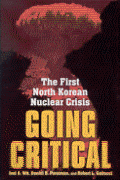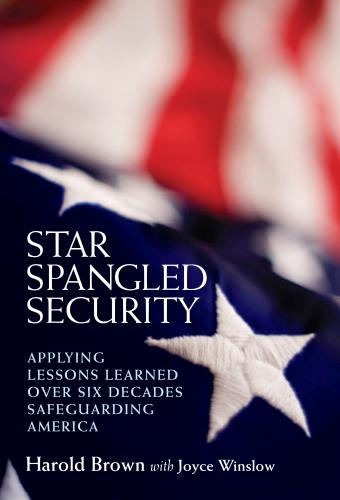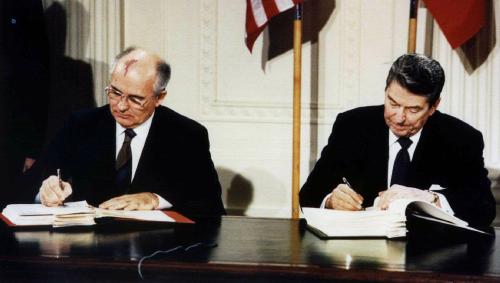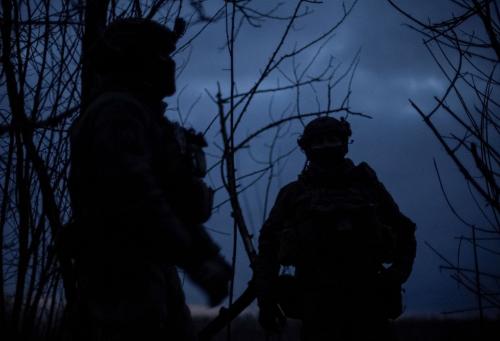Thirty years ago last week, Ronald Reagan and Mikhail Gorbachev signed the Intermediate-Range Nuclear Forces (INF) Treaty, resulting in the elimination of some 2,700 U.S. and Soviet ground-launched intermediate-range missiles. To mark the occasion, my colleagues Alina Polyakova and Steve Pifer—along with Olga Oliker of the Center for Strategic and International Studies—and I gathered at Brookings to look back on what the historic treaty achieved and examine its uncertain future.
Today, that agreement and others are unraveling. A brief look at how American and Russian negotiators managed to get to “yes” in 1987 can illuminate a path forward despite—or, more to the point, because of—current troubled U.S.-Russian relations.
The saga of the negotiations began in the 1970s with a West German trio of nightmare scenarios:
- A Soviet/Warsaw Pact invasion through the Fulda Gap near the border with East Germany;
- A response by NATO that included detonating nuclear weapons on German soil; and
- If the chips were down, a reluctance in Washington to launch U.S.-based intercontinental ballistic missiles, because that could have prompted the Soviets to attack the American homeland.
West Germany’s chancellor, Helmut Schmidt, had all three of these concerns in mind, especially because the U.S.S.R. had deployed a new generation of mobile intermediate-range missiles with multiple warheads—designated by NATO as SS-20s—that could reach targets anywhere in Western Europe. Schmidt believed that this development required NATO to match in both quality and quantity the new Soviet threat. Otherwise, the U.S.S.R. would have succeeded in “decoupling” NATO’S ability to deter a Soviet attack with nuclear assets in Europe from the U.S. arsenal on the other side of the Atlantic.
President Jimmy Carter sought to meet Schmidt’s request by sending neutron bombs to NATO bases in Europe. The proponents believed that these weapons would suffice, since they were designed to detonate low-yield thermonuclear charges that would kill the invaders while minimizing the area of collateral destruction.
That idea backfired. A public uproar ensued, with some protesters in Europe seeing the neutron bomb as a way to make nuclear war more likely—and it stoked West Germans’ fear of mushroom clouds sprouting from the lowlands and the Rhine valley.
Schmidt was prepared to take the political flak and rammed that plan through the Bundestag, only to have the rug pulled out from under him by Carter, who retracted the neutron bomb option.
NATO went back to the drawing board and adopted the so-called “dual-track” strategy: a deployment track that would match the Soviet SS-20s with U.S. upgraded Pershing intermediate-range rockets and ground-launched cruise missiles, all with nuclear warheads, and a diplomatic track with Moscow to restore a balance at a lower level of weapons.
When talks with the Soviets began in Geneva in 1980, the U.S. opening position was an equal ceiling on land-based theater systems. Those talks went into recess when Ronald Reagan came into office.
Reagan was already thinking big—not just about arms control but genuine disarmament. He wanted to eradicate whole categories of nuclear weapons, starting with intermediate-range nuclear forces. His administration proposed not just a “zero option”—no Euromissiles on either side of the Iron Curtain—but a “global zero,” which meant the Soviets would have to get rid of any such weapons east of the Urals, in exchange for NATO’s cancelling the planned Pershing and ground-launched cruise missile deployments.
The Kremlin rejected that sweeping proposal and a more modest interim U.S. one as well.
While the talks in Geneva stalled, deployments proceeded. In November 1983, when the United States began positioning missiles in Europe, the Soviet delegation in the Geneva talks walked out of the INF negotiations as well as separate talks on strategic weapons.
That was during Andropov’s short stint in the Kremlin. He and Reagan had virtually no contact, and the Cold War went frigid.
Yet when Andropov’s protégé, Mikhail Gorbachev, rose to the leadership of the Kremlin in 1985, he was determined to end the Cold War and slow down—if not end—the arms race. In less than a year, he announced a plan for nuclear disarmament by the turn of the century, including the elimination of U.S. and Soviet INF missiles.
As for INF, he adopted Reagan’s zero option. A year later, the Soviets accepted the global zero proposal. In December 1987, Reagan and Gorbachev signed the treaty banning all U.S. and Soviet intermediate- and shorter-range missiles—that is, all ground-based missiles with ranges between 500 and 5,500 kilometers. By the summer 1991, the two countries had eliminated some 2,700 missiles, plus their launchers and other support equipment. Later that summer, George H.W. Bush and Gorbachev signed the START I agreement, which would dramatically reduce U.S. and Soviet strategic nuclear weapons numbers.
In this, the last full year of the U.S.S.R.’s existence, it looked like the superpower arsenals were going to be cut back spectacularly, alleviating fears of World War III. Moreover, the Soviet Union and the United States had taken a major step toward compliance with the Nonproliferation Treaty, which went into force in 1970 and obligated nuclear-weapons states to pursue complete nuclear disarmament.
This achievement was a bright spot in the otherwise ominous nuclear age and the acme of arms control. A quarter of a century later, we are at the nadir. Existing pacts are unraveling; there are no new ones in prospect; and the arms race may be ramping up.
Key officials in Washington and Moscow seem to think that U.S.-Russian relations are so fraught that negotiations are certain to fail. Instead, they should take a lesson from their predecessors going back to the Cuban Missile Crisis in 1962. Near-catastrophes like that one convinced the leaderships in Washington and Moscow how dangerous unregulated nuclear competition was. As a result, they initiated a long, tough, but ultimately successful series of agreements that stabilized mutual deterrence, thereby keeping the nuclear peace intact even as the ideological and geopolitical struggle raged. If our current leaders let the arms control regime unravel, the years ahead could all too plausibly be even more perilous than the Cold War itself.







Commentary
U.S.-Russia arms control was possible once—is it possible still?
December 12, 2017